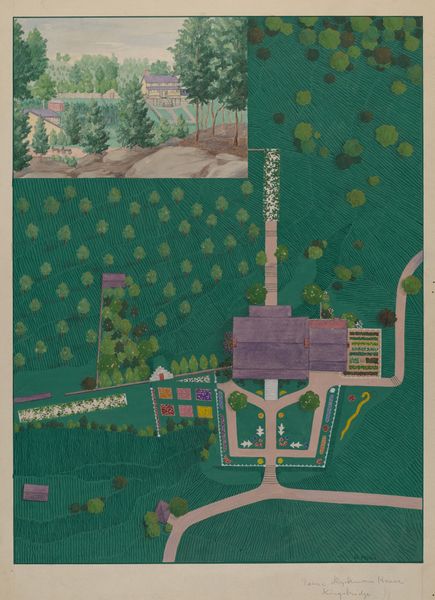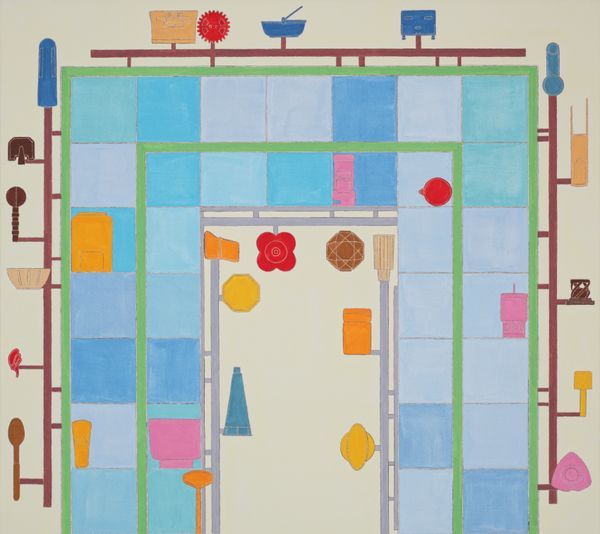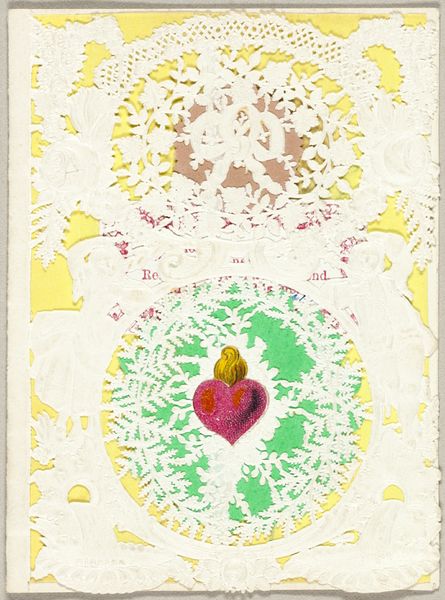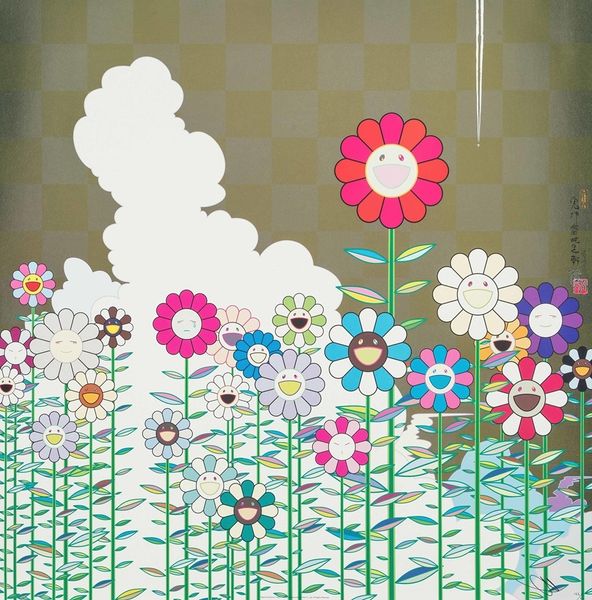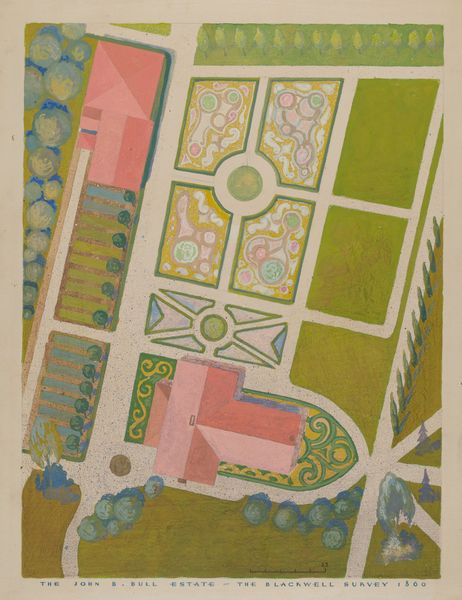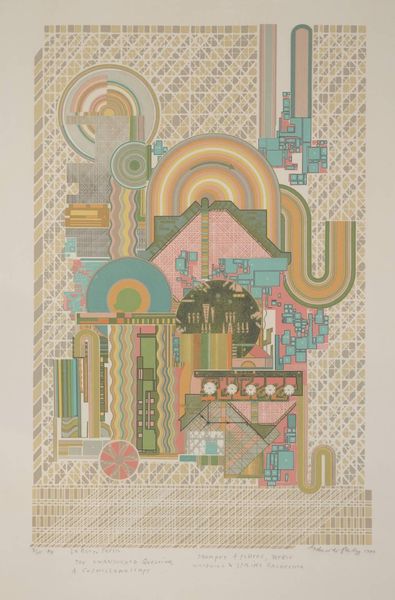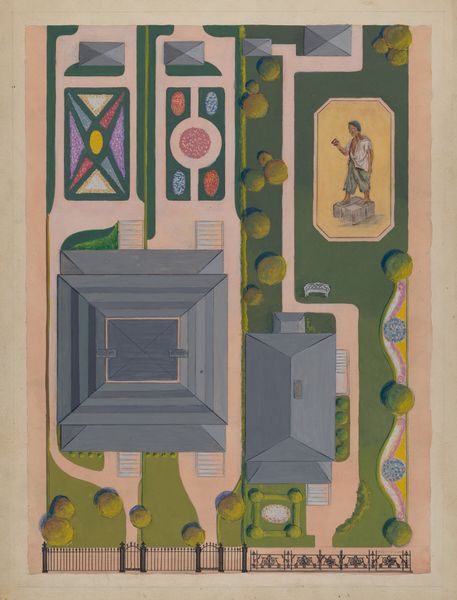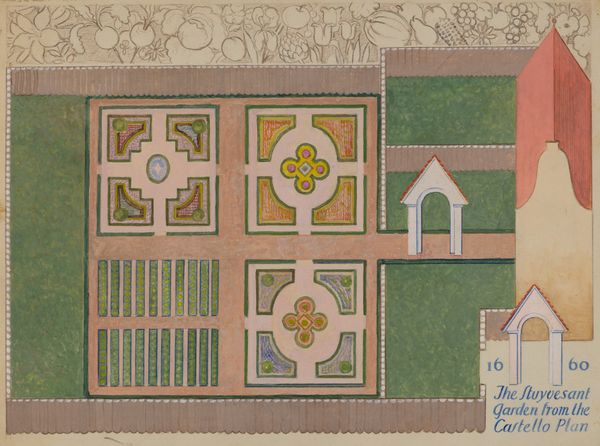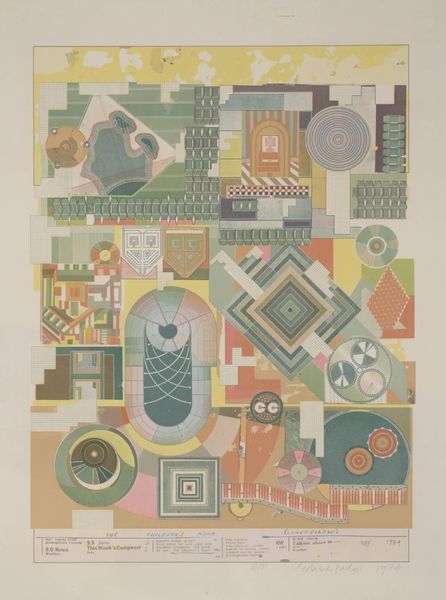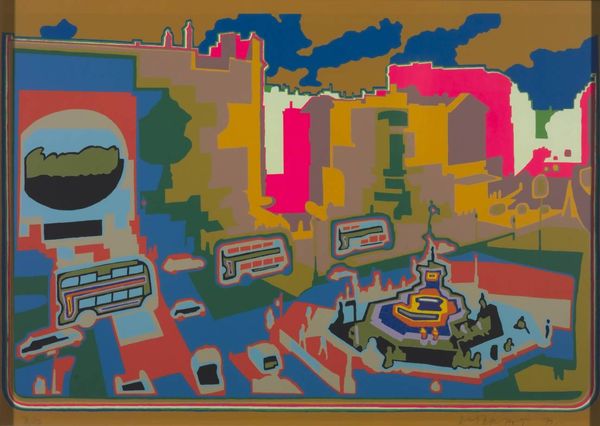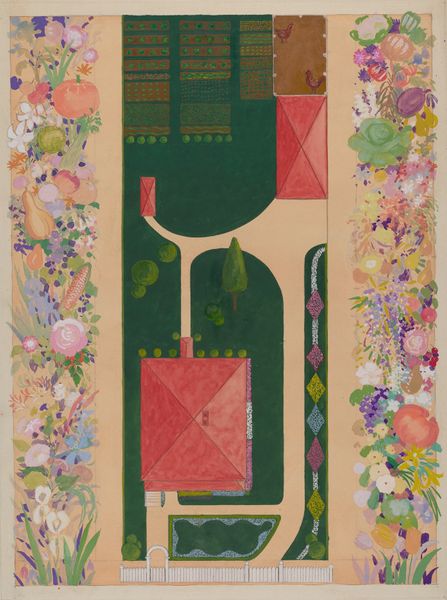
drawing, painting, watercolor
#
drawing
#
painting
#
landscape
#
watercolor
#
geometric
#
cityscape
#
academic-art
Dimensions: overall: 50.9 x 36.3 cm (20 1/16 x 14 5/16 in.)
Copyright: National Gallery of Art: CC0 1.0
Editor: Here we have George Stonehill’s “Lispenard's Estate and Gardens,” painted around 1936, a drawing rendered in watercolor. The precision and detail of the layout give it an almost architectural feel. It’s very orderly, almost like a dollhouse version of a real estate plan. What do you see when you look at this, especially thinking about the historical context? Curator: What strikes me immediately is the assertion of ownership and control. It’s not just a landscape, it's a plan, a symbolic representation of power. Consider that in the 1930s, even as urban areas were growing rapidly, the idea of the landed gentry, their estates and social dominance, still held considerable cultural weight, particularly in certain social circles. The heraldic crest adds another layer. Do you recognize any visual cues relating to its history or location? Editor: Well, I suppose the name "Lispenard" is a clue! Were they a prominent family in New York history? It looks Dutch? Curator: Exactly. The Lispenards were a significant landowning family in what is now Lower Manhattan. Their estate, of course, shaped the development of the city, and this image is, in effect, a claiming of space in an era where development challenged this social hierarchy. This wasn't just any piece of land; it was associated with old wealth and influence, so Stonehill is actually visualizing this family's legacy. It almost memorializes something as the city's development happened. Editor: So, in a way, it's a commentary on the changing urban landscape and the preservation of historical memory. This is starting to make more sense, thanks! Curator: Precisely. And, it’s a reminder of how the built environment, even in pictorial form, carries profound social and political meaning, whether it's visible immediately or not. These landscape views aren't necessarily as serene or decorative as you'd first imagine. Editor: That’s fascinating, it really highlights the way art intersects with historical and political narratives. I will definitely see more layers to art now.
Comments
No comments
Be the first to comment and join the conversation on the ultimate creative platform.
